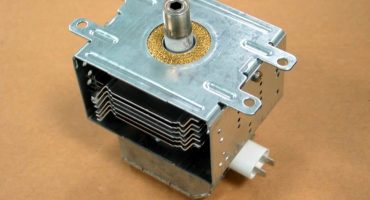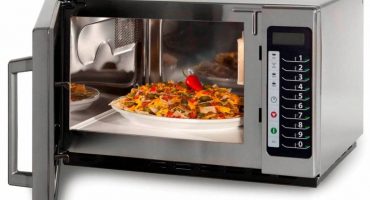Most homes have a microwave. When working, this technique always makes sounds. But if the noise is amplified, it means that something is not working properly. Let's see why the device may pop or make a noise.
Why the microwave makes strange sounds
There are several reasons why a microwave oven can hum, sparkle, or crack:
- The mica plate burned out.
- Inside the microwave oven there is a dish that is made of metal or contains metal particles.
- If nothing is put in the microwave and turn it on.
- Enamel is damaged inside.
Burnt diffuser plate
The mica plate may burn out if grease and dirt get into the gasket. In this case, the metal begins to burn, and the magnetron gets damaged.
In 80% of cases, it is precisely because of the burning of the mica plate that the microwave begins to make strange noises and sparkle. The diffuser plate is located on the right side on the inside wall of the furnace.

Magnetron burned out due to plate damage
Magnetron burned out due to plate damage
What to do in such a situation
You can repair the structure yourself. To do this, you need:
- Turn off the microwave.
- Short the magnetron and capacitor.
- Check the condition of the mica. If it is damaged, replace the plate. It can be attached to the wall with self-tapping screws or plastic snaps.
- Take out the magnetron.
- Check cap. If it is whole and unburned, install the magnetron in place. If the cap is damaged, replace it. If there is no cap at all, you will have to replace the magnetron.
A mica plate is needed to pass electromagnetic waves that the magnetron emits into the camera. It also serves to protect the magnetron itself from food and dirt.
You can buy a mica plate in any household appliance store.
How to avoid plate damage
Keep the heating chamber clean. Always remove food and grease. When heating, it is recommended to cover with a cap or dry cloth, then the fat will not get on the plate.
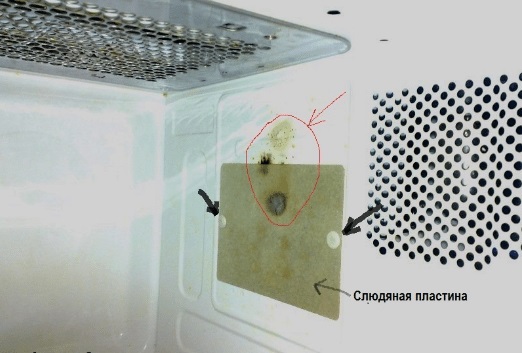
Damaged plate
What exactly can spark
If the microwave sparkles and you want to repair it, you need to know how the device works.
One of the main elements of the device is the magnetron, which generates electromagnetic waves. If their voltage is high, high frequency oscillations appear. If the wavelength is 12 centimeters and the frequency is 2.4 gigahertz, the microwave starts to work.
To prevent microwaves from extending beyond the device, it is essential that the door is always closed. Water is heated by the contact of electromagnetic waves and molecules.
Why sparks may appear
An electrical discharge appears when two conductors come in contact. If contact occurs, sparks will appear. Such conductors can be:
- Metal dishes.
- Foil.
- Items that contain metal.
Therefore, it is forbidden to put utensils made of metal in the microwave. If foil is needed for cooking, the distance between it and the microwave must be at least 3 centimeters.
Sparks can also occur if there is a container inside the microwave that is too large. Such containers touch the walls of the heating chamber, scratching the enamel.
If the conductors are in contact, an electric discharge appears inside, and this can lead to breakage.That is why the microwave pops and creates sparks.
LG microwave ovens crack and spark if they are empty (no dishes inside).
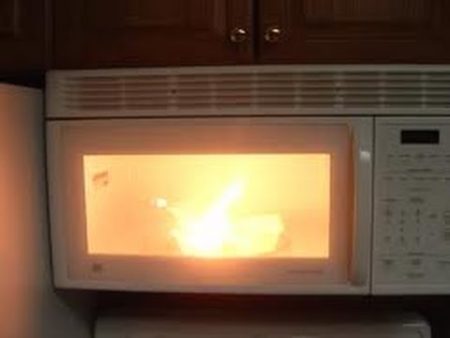
Microwave sparks
Waveguide cover
The magnetron is not inside the microwave, but in a special waveguide chamber. At the top of the waveguide there is a special cover that does not allow current to go outside the chamber. Such covers are made of plastic or mica.
If dirt, grease, or food particles get on the lid, they can catch fire, making a crackle. Electricity falling on this dirt burns it, so sparks and crackle appear inside.
If this happens, the lid will be damaged. If it is damaged, it is unlikely that it will be possible to limit itself to just replacing the cover itself; most likely, the magnetron and its cap will have to be replaced. It makes no sense to clean the lid from soot, as the charred areas began to metallize. Such a malfunction is very difficult to repair on your own. Have to turn to experts.
Magnetron is the most important and expensive part of a microwave oven. Its cost may exceed $ 100. If the magnetron is damaged, it is likely that electromagnetic waves will burn through one of the walls of the microwave.

It looks like a waveguide cover
Enamel damage
Sparks can occur if the enamel is damaged inside the microwave. From a constant temperature difference, it begins to deteriorate. You need to buy a special enamel (in a household appliance store) and apply it on the walls of the microwave. Do not look for a replacement enamel, as other solvents can lead to negative consequences.
Enamels for microwave can be electrically conductive or special food (based on organic substances). It is recommended to apply a new enamel, after removing the remnants of the old one (only those areas that are damaged).
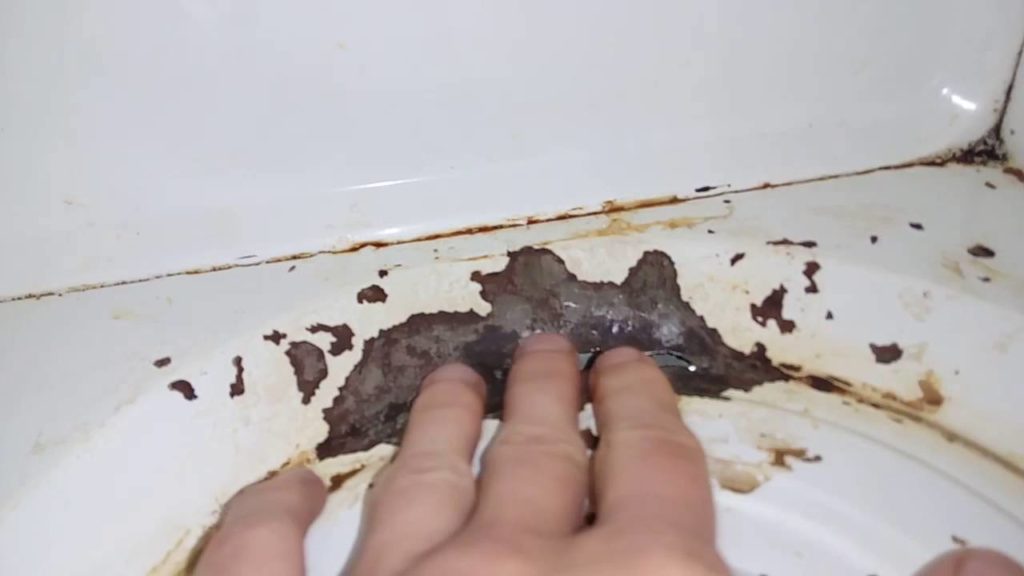
Blurred enamel
Microwave "shoots"
A microwave can “shoot” or creak if one of the following parts is damaged:
- Capacitor.
- Diode.
- Magnetron.
To check the capacitor, connect an ohmmeter. If the arrow is on it, it means that the capacitor is damaged and needs to be replaced.
A microwave can also sparkle if it has been operating for more than 60 minutes. Internal parts begin to overheat and may fail. It is recommended that the microwave rest every 40 minutes.
Diode
This part is easier to replace than to test its performance. There are no specific characteristics that could indicate that a diode is the cause of extraneous sounds. You can try checking the capacitor. If it is heated, the diode is faulty. But this phenomenon is not found in all microwave models.
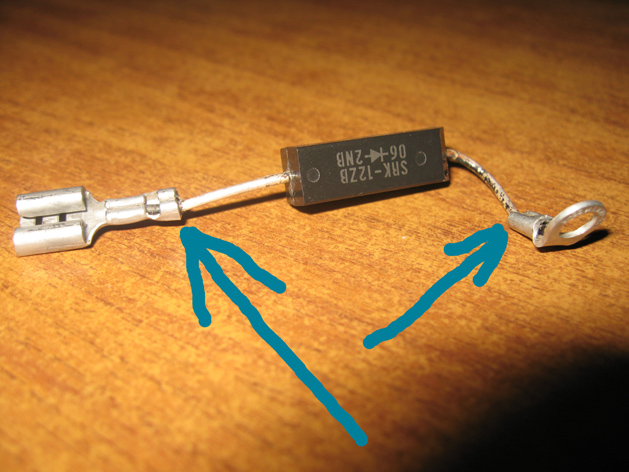
Very often contacts in microwaves
If the magnetron is defective, the products inside the microwave cease to heat up. Check for deposits or cracks. Replace if necessary.
It happens that food particles fall under a rotating plate. Because of this, the plastic spindle burns out.
There are many reasons why a microwave sparks, pops, or buzzes. Sometimes just washing the device is enough. In some cases, it is necessary to find the damaged part and replace it.


